
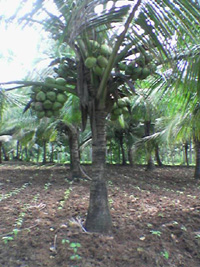
Coconuts is the most important plant species in tropical counties.Coconuts requires a humid tropical climate , rainfall ranging 100-1500 cm.It can be grown up to 900m altitude.The most suitable average temperature is 27-320 C .Plenty of sunshine and water are essential for good yield.Coconut palms are of mainly two types i.e.tall and dwarf.However , semi-tall are in between.
Tall : West coast tall Singapore Giant .Malaya Giant , Philippines ,Dward : Ceylon Dwarf Red ,Ceylon Dwarf Green etc, Hybrid T x D , D x T , T x T ,Significance of coconuts hybrids: Coconut hybrids are early bearers . They are high yielder More number of palms can be planed per unit area because coconuts hybrids are dwarf in nature. They are comparatively tolerant to pests and diseases.
Coconut is propagated by seeds. Generally from the month of November onwards provision of irrigation should be made. The interval of irrigation may be kept 8-10 days.(Cocos nucifera) tree of the palm family (Arecaceae). It is one of the most important crops of the tropics. The slender, leaning, ringed trunk of the tree rises to a height of up to 25 m (80 feet) from a swollen base and is surmounted by a graceful crown of giant, featherlike leaves. Mature fruits, ovoid or ellipsoid in shape, 300450 mm (1218 inches) in length, and 150200 mm in diameter, have a thick, fibrous husk surrounding the familiar single-seeded nut of commerce. A hard shell encloses the insignificant embryo with its abundant endosperm, composed of both meat and liquid.
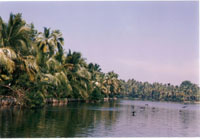
Coconut fruits float readily and have been dispersed widely by ocean currents and by humans throughout the tropics; they probably originated somewhere in Indo-Malaya. Marco Polo was among the first Europeans to describe coconuts. Coconut palms flourish best close to the sea on low-lying areas a few feet above high water where there is circulating groundwater and an ample rainfall. Most of the world's coconuts are produced on small native plantations. Propagation is by unhusked ripe nuts. These are laid on their sides close together in nursery beds and almost covered with soil. After 4 to 10 months the seedlings are transplanted to the field, where they are spaced at distances of 810 m. Palms usually start bearing after 5 to 6 years. Full bearing is obtained in 15 years. Fruits require a year to ripen; the annual yield per tree may reach 100, but 50 is considered good. Yields continue profitably until trees are about 50 years old.
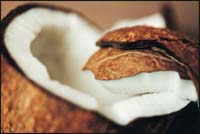
The harvested coconut yields copra , the dried extracted kernel, or meat, from which coconut oil, the world's ranking vegetable oil, is expressed. The Philippines and Indonesia lead in copra production, and throughout the South Pacific copra is one of the most important export products. The meat may also be grated and mixed with water to make coconut milk, used in cooking and as a substitute for cow's milk.
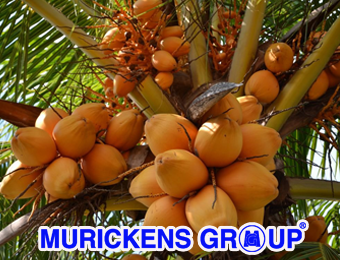
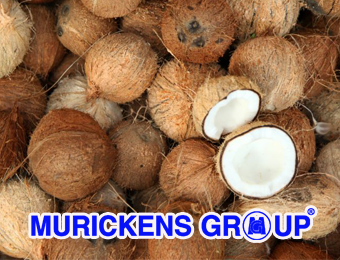
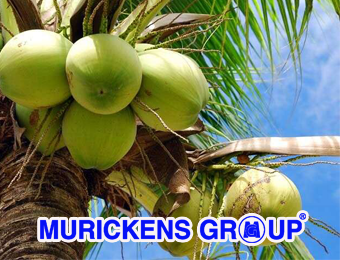
MURICKENS GROUP
HO : KOTTAYAM-KADUTHURUTHY
BR : KOTTAYAM- CEMENT JUNCTION
ERNAKULAM-PALARIVATTAM
Real estate cunsulting officials at U.S.A. (Texas & Newyork) & Bombay
Email : mg@murickens.com, murickans@gmail.com